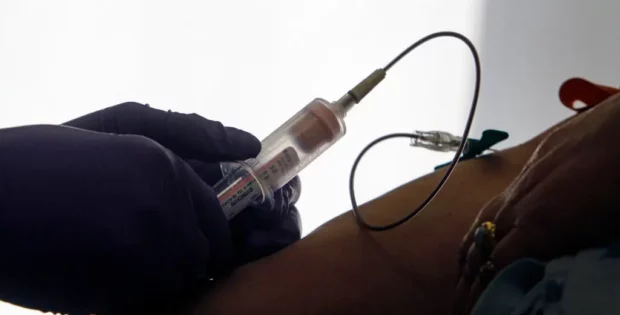Debunking 5 Myths Associated with Blood-Based Cancer Screening

On a recent flight, I had the most interesting conversation with a fellow passenger which led me to write this article. We were having a casual conversation, and, of course, she asked me what I do for a living. I told her that I work in the blood-based cancer screening space. As someone with a family history of cancer and having gone through some genetic testing herself, she had several follow-up questions for me. This opened my eyes to the fact that when you say “blood-based screening”, that can ring different bells for different people, and here I will go through some common misconceptions that people have about blood-based screening.
Myth #1: Blood-based cancer screening is the same as hereditary cancer testing.
Cancer screening tests are very different from hereditary cancer tests. To understand this clearly, we first need to understand the difference between a screening test and a diagnostic test. A screening test is usually done to detect diseases in individuals who do not have any symptoms. The main purpose of a screening test is to be able to detect diseases early as this is when treatment is often more effective. Today, technology has evolved such that there are blood-based screening tests available to screen for certain cancers.
A diagnostic test, on the other hand, is done to establish or confirm the presence or absence of disease among individuals who display symptoms or asymptomatic individuals with an abnormal screening test. The purpose of a diagnostic test is to provide a definite diagnosis of a disease. Hereditary cancer testing or what we refer to as “genetic testing” is a diagnostic test that looks for specific inherited changes in a person’s genes that put a person at an increased risk for developing cancer. This may be performed due to a personal or family history of cancer, rare cancers in the family or the presence of birth defects that may be associated with cancer. If there is a concern of there being an inherited cancer syndrome in the family, genetic counseling and testing are usually recommended.
Myth #2: My ob/gyn did some blood tests when I was pregnant. I should be good.
Women undergo prenatal testing when pregnant. Noninvasive prenatal tests (NIPTs) can screen women’s blood to determine if the baby is more or less likely to have certain birth defects, many of which are genetic disorders. These may be done in the first or second trimesters, and if positive, they may be followed up with diagnostic testing and/or ultrasound. If there is a family history of cancer, the clinician may order confirmatory genetic testing, which again, is not the same as blood-based cancer screening.
Myth #3: I had a normal or negative result the last time I got screened, so I don’t ever need to get screened again.
Screening is to be done in certain intervals depending on what you are getting screened for and what technique is being used for screening. It also depends on the risk factors and the healthcare provider’s recommendations. For example, if someone with no family or personal history of cancer was screened for colorectal cancer via colonoscopy and received a negative result, their next screening will likely be after 10 years. However, if the same person was screened via a stool-based test such as a fecal immunochemical test (FIT) and received a negative result, they will need to get screened again the following year1. Similarly, if you undergo blood-based cancer screening, you will need to rescreen based on your healthcare provider’s recommendation.
Myth #4: Drawing multiple tubes of blood will harm my health.
Until I learned that this was a concern for my fellow passenger, I didn’t realize that this was a common concern for patients. Most healthy adults can tolerate losing up to 14% of their blood without any physical effect2. However, blood draws in healthy adults should not exceed 3% of the total blood volume3. For instance, a normal adult weighing 70 kgs (155 pounds) has approximately 5.5 liters (5500 ml) of blood. It is safe to draw up to 165 ml of blood from this person. Most tubes of blood carry about 10 ml of blood. Drawing 10 tubes of blood would mean drawing 100 ml. Hence, drawing a few tubes of blood is harmless in most cases.
Myth #5: I had an abnormal or positive test result. There must be something wrong with me.
Screening tests, blood or otherwise, are usually never 100% sensitive or specific, and there is room for false positives and false negatives. A positive screening result must always be followed by a diagnostic test for confirmation.
Blood-based screening is the screening option that patients prefer today4 because it fits right into patients’ schedules and breaks through barriers of screening since it does not require any special preparation, and people don’t have to take another day off work. In the long run, this will help increase adherence and improve compliance to screening, which is a major goal of the US Department of Health and Human Services’ Healthy People 2030.
I am glad that I had this conversation with my fellow passenger in the airplane, as this opened my eyes to what misconceptions people may have when it comes to blood-based screening.


